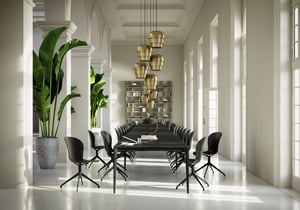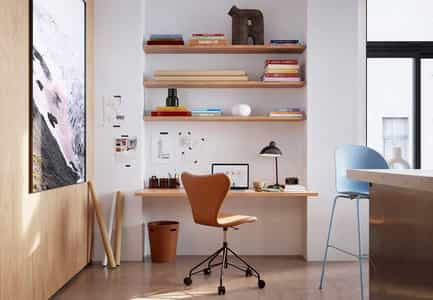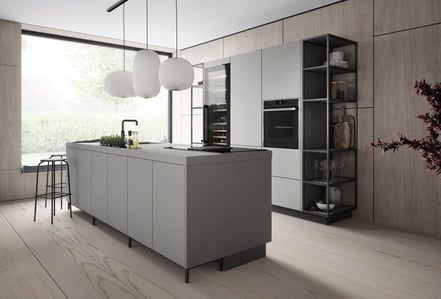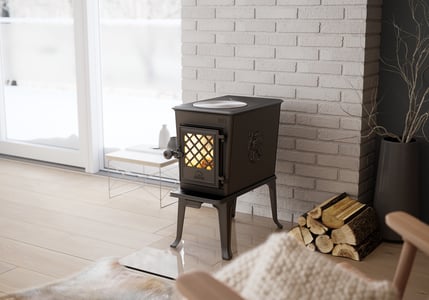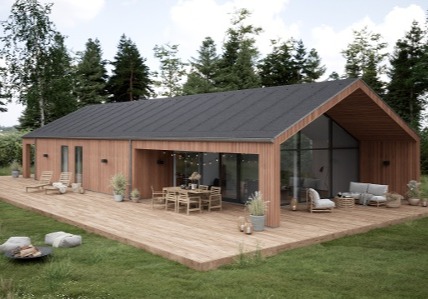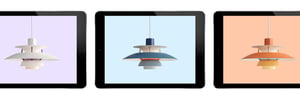As the online e-commerce landscape grows ever more competitive, brands are seeking to employ new strategies that enable them to grow their customer base, improve brand loyalty, and increase sales. One effective strategy is through the use of product configuration software, which serves to enhance the customer experience and engage consumers as they continue along the customer journey.
However, not all product configurators are the same, and they have actually been around for quite some time. Originally once a tool used in the manufacturing industry, they have since evolved to become feature-rich, intuitive tools that greatly impact both the user experience and a brand’s sales efforts and marketing mix.
What will you discover?
- The difference between online and offline configurators
- How to choose the right type of configurator
- What are the best product configurators on the market
- Features to look for in a product configurator
The difference between online and offline product configurators
You may have come across product configurator examples in a retail setting already. For example, Invita, a leading kitchen supplier, utilizes a kitchen configurator in their showroom to provide customers with high-quality 3D renderings of kitchen designs based on the consumer preferences and selections.
Making the move from traditional photos to 3D imagery has helped Invita to increase sales and ensure that their customers remember the positive shopping experience. The kitchen configurator eliminates the need for customers to try and imagine what their new kitchen might look like — instead, they can see different combinations of kitchen designs in real-time, enabling them to feel more assured in their purchase decision.
Online product configurators work in a similar fashion. They allow consumers to choose from available options, materials, and features when seeking to purchase a product that has many variants, such as a piece of furniture. Online shoppers can see the result of their selection in real-time, and if you wish, they can be presented with an accurate cost quote based on their selections.
You might also like: "The future of brick-and-mortar retail: What does it look like?"
Considerations when deciding which type of product configurator to choose for e-commerce
Product configurators are available in both 2D and 3D visualization. However, a survey found that approximately 83% of customers prefer high-quality product images when making their purchase decisions [I]. So it stands to reason that a 3D rendering will hold consumer attention better than 2D images. In fact, user engagement increases by as much as 66% with a 3D configurator [II]. Besides that, configurators are also divided based on their functionalities and size. Slim, more simple models are used primarily for inspirational and marketing purposes. They don't require a lot of resources or elaborate IT structure to function. On the opposite end of the spectrum are sales configurators fully integrated into the sales experience, including e-com check-ins/outs. This requires more extensive involvement of resources and other parts of the organization.
Simple product configurator
Advantages:
- Inspirational and fun
- Demystifies product and educate customers
- Builds confidence and trust
- Slim, small in scope and easier to implement
Downsides:
- Principally for inspiration - but not fully integrated with sales and order fulfillment
- Not connected to ERP - requires manual updates, or will remain only a partial catalog
Sales-integrated configurator
Advantages:
- Drives sales directly – includes e-com check-out and/or links to local partners and retailers
- Knits physical and digital environments into one seamless experience
- Connected to ERP – therefore requires fewer manual updates
Downsides:
- Complex and far-reaching – requires entire organization and comprehensive IT involvement
So, the best product configurators will ultimately provide 3D solutions, provide all the possible product configurations available to a customer, and enable sales teams, manufacturing, and product development teams to work more efficiently together.
How can you use a product configurator to streamline the sales process?
Some of the top benefits for sales teams when using a product configurator include:
- Integration with e-commerce sites, CRM, and additional retail platforms
- A reduction in errors during ordering and processing
- Streamlined ordering process
- Takes the guesswork out of the purchasing process for buyers, making it easier for sales personnel to accurately portray complex products
- Offers customers real-time product imagery
- Quicker and more accurate quoting
- Streamlines the ordering process and improves communication with distributors
- Improved accuracy regarding availability of inventory
- More time to handle other important sales functions
As you can see from the above, a product configurator can be extremely useful in aiding both a company’s sales force and potential customers who expect to be able to see an accurate representation of what they intend to purchase. When customers are able to choose the options and features of a product, see the results of their selection in real-time, and quickly receive a quote based on their choices, it eliminates a burden on the sales team and propels the customer further along on their buyer journey to a purchase decision.
What is the best product configurator for your business?
Getting started with product configuration and integrating a product configuration website with your e-commerce site doesn’t need to be a difficult process. However, you do need to figure out which product configurator will work best for your business. You also need to consider that as technology has evolved over the years, so too have consumer needs and expectations also changed significantly.
Brands need to communicate their products in a visually interactive manner. Additionally, they must be able to showcase the full range of their product catalog, as well as the value of complicated products and solutions. Lastly, they must do so in a way that attracts, engages, and retains customers. The best product configurators will be easy to use yet present your products in photorealistic 3D quality, serving to turn leads into customers.
Product configuration and the furniture industry
One product configuration example where the software becomes an important solutions configurator is within the furniture industry, for both B2C and B2B purposes. Everyone from office managers to homeowners shops for furniture, and many now choose to do so online as it is more convenient and less time-consuming.
However, the challenge for brands was to find a way to present all possible combinations of their furniture products to solve customer pain points and create a more engaging experience that leads to a purchase decision. High-quality 3D product configurators solve this challenge, enabling online consumers to discover more furniture product possibilities than they would if they visited a live showroom.
Home improvement and garden retailer Homebase is another brand that has found the benefit of using product configuration as a lead-generating solution. A GoCustom product configurator was the perfect fit for Homebase, as they wanted to show and configure their many solutions and high quality of both materials and textures, but also reduce the time to action for their customers.
Product configuration in the building industry
The increasing complexity of products in the building supply industry, along with a stronger desire for personalization, has also created new challenges that can be solved by a product configurator. It only makes sense, since the initial purpose of product configurators was to aid the manufacturing industry with the design, production, and assembly of products.
In the B2B sector, purchasing managers can now use product configurators to select specific features and view a 3D rendering of the products they need from all angles, improving the research stage of the buying process and saving a significant amount of time.
Egernsund Wienerberger, a major name in the building and construction industry, needed a way to showcase their tiles and bricks in the highest quality possible, and subsequently engage customers to interact with their products from the comfort of their home. They wanted to stay on top with regard to design and implementing features visitors didn't even know they could benefit from. Now, through the use of a GoCustom product configurator, Egernsund Wienerberger's image has dramatically improved and they are now the front runner as one of the first brick manufacturers in the market to use 3D visualization.
Features to look for in the best product configurators
Many other brands who have chosen wisely when selecting product configuration software include:
- Bespoke Cycling — customers can choose their ideal bike with real-time pricing.
- Steelcase — customers can design a range of furniture and technology products.
- Tesla — Tesla serves up their product configurator website as soon as you head to their page, enabling you to customize your ideal car and pay for it right then.
- Bamford Watch Department — with their product configurator, you can design your watch right down to the smallest dial.
When choosing your own product configurator, consider the following in order to ensure the software meets your own needs.
Give customers the information they need to make their purchase
The product configurator should make choosing a product fun, but it also needs to provide customers with all the information they need to fully understand what options and features are available to choose from, how much it will cost for each option, and whether or not certain options are compatible.
1. Provide a seamless 360° view of the product
Enabling customers to rotate and view the product from any angle vastly improves the online shopping experience and leaves a lasting impression.
2. Display each step of the process
At each stage of the customer’s selection, be sure to show the process of the product that is being built. This serves to create a more immersive experience and also showcases how the customer’s choices affect the build.
3. Guide the customer
Not every customer will be familiar with every component of a product that may be selected. Be sure to provide guided menus so that customers can get a better sense of what each part is and how it might affect the build.
4. Allow customers to save their progress
Complex products could take a while to build, and customers may need to interrupt their progress to handle other things. Allowing them to save their configuration and return to it at a later time is of great benefit to both your brand and the customer.
5. Real-time pricing
Allowing customers to see how their choices affect the price enables them to maintain full control of the cost of a product.
In conclusion
Different product configurators will also have unique features, so be sure to research each type of product configurator in-depth to ensure it will help you to achieve your business goals.
Sources
[I] https://www.threekit.com/ecommerce-platform-integration/shopify-product-customizer?hsLang=en
[II] https://aws.amazon.com/blogs/apn/audis-3d-online-car-configurator-uses-zerolight-to-deliver-a-fully-interactive-3d-experience/

